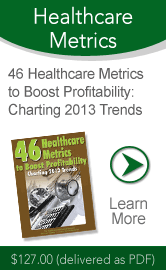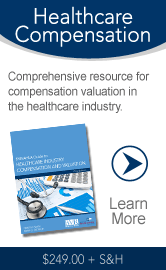 |
 |
Issue #9-2 | February 21, 2013

Time has come to shape new Medicare payment schemeAbout 500 healthcare providers will try out a new Medicare payment plan designed to reward providers for better coordinating care for patients after they leave the hospital, according to an announcement from the Centers for Medicare & Medicaid Services (CMS). Now’s the time for providers to influence the configuration of this new setup.‘Episode’ payments: The Bundled Payments for Care Improvement Initiative will kick off as early as April and will link payments for multiple services patients receive during their complete “episode” of care. Participants were able to choose from 48 episodes of care for the testing. The idea is to encourage hospitals to take an active role in how patients are cared for after they are discharged. The goal is to improve the quality of care and lower costs. The providers selected for the test represent a broad range of entities, including nonprofit and for-profit hospitals, academic medical centers, physician-owned facilities, and post-acute care providers. Four models of bundled payments are being tested: Model 1 bundles payments for hospital and physician services during an acute care hospitalization; Model 2 bundles payments for hospitalization and all post-acute care services for up to 90 days after discharge; Model 3 bundles payments for post-acute care services after hospitalization, but doesn't include the hospital stay; and Model 4 sets a fixed prospective payment for all services during a hospitalization plus readmissions within 30 days. What to do: It’s important to realize that this is just a test—and hospitals have a chance to shape the rules based on what they see happening during the testing. For example, there could be a relatively small number of patients within certain episodes and substantial year-to-year variations in the severity of illness and, therefore, the costs of treatment. Will the new system protect against losses resulting from this kind of variation? Will there be some kind of “stop-loss” protection? Can cases with a prognosis of high-cost care be excluded from the episode definition? As the test goes on and experience is gained, test participants and other interested parties need to take an active part in working with CMS to shape this new system. Best ways to avoid looming financial penalties for readmissionsLast year, hospitals had their reimbursements slashed for Medicare patients who had to be readmitted but who shouldn’t have come back. The penalties are set to increase, so hospitals are anxious to reduce preventable readmissions. Fortunately, hospitals have found ways to do it. Top strategy: “Care transitions management” is the best insurance against readmissions, according to a new report. This process involves effectively handing off discharged patients to those who will inherit their care and doing any necessary follow-up to ensure that proper care is obtained. Well over half (59%) of hospitals surveyed say this is the strategy they use, according to the report. Other tactics used successfully by hospitals include: improving the discharge plan (cited by 58% of respondents), disease management (54%), medication reconciliation (54%), and self-management education (51%). What’s at stake: Last year, CMS reduced reimbursement for 2,217 hospitals at an average penalty of $125,000, according to Amy Boutwell, M.D., MPP, and president of Collaborative Healthcare Strategies. She is also a co-founder of the Institute for Healthcare Improvement (IHI) STAAR (State Action on Avoidable Rehospitalizations) initiative. “You should look at the current penalty and the projected penalties that your hospital is experiencing not only for this year but for the 2% increase planned for fiscal 2014 and then the 3% increase in fiscal 2015,” she says in the report. Other actions: Hospitals are taking other steps to help reduce preventable readmissions. Most hospitals (55% of respondents) say they use risk stratification to identify patients who are most likely to be readmitted. By far, the medical condition most likely to trigger a readmission is heart failure (81%). After a patient is discharged, certain key interventions are now being performed more frequently. For example, home visits have more than doubled, and confirmation of follow-up appointments is up 15%. Survey respondents identified five tasks they perform for patients upon discharge: review medication plan (76%), review discharge instructions (71%), confirm follow-up appointment (69%), call within 72 hours of discharge (60%), and confirm “red flag” warnings (57%). Learn more: The report, 46 Healthcare Metrics to Boost Profitability: Charting 2013 Trends, from the Healthcare Intelligence Network (HIN), contains performance metrics in key areas of healthcare activity and growth. The metrics are derived from the responses of hundreds of healthcare organizations to HIN’s monthly e-surveys on the latest industry trends. EHR woes plague community hospitalsA third of community hospitals say they made a big mistake in choosing a vendor for their electronic health record (EHR) system, reveals a brief from KLAS, a healthcare research and consulting firm. In fact, if they could do it over again, they wouldn’t buy the system they did. The brief, Community Hospital Market Share 2012: Small Hospitals, Big Changes, says that more than 200 hospitals with less than 200 beds changed or replaced their system in 2011. In terms of market share, the top five for 2012 were MEDITECH (20%), Cerner (12%), Epic (12%), CSPI (11%), and McKesson. Vendor rankings: KLAS also ranked EHR vendors as either “healthy,” stuck in a "revolving door," "at-risk," or a "new entrant." Healthy: Vendors in this category have had a lot of “wins” relative to losses. A "win" is when a hospital that had no clinical information system adopts one from the vendor or a hospital upgrades from a piece of revenue-cycle technology to more clinical technology. Vendors in this category include Epic, Cerner, and McKesson's Paragon system. Revolving door: These vendors have a lot of wins, but also some dissatisfaction among users, particularly smaller, critical-access hospitals. They include Healthland, CPSI, HMS, Siemens, and Allscripts. At-risk: Vendors in this group have "no energy" around their offerings or as many wins as losses. They include McKesson's Horizon suite, QuadraMed, and MEDITECH. New entrants: Some vendors are beginning to generate market energy and gain share because they have newer technology. They include Prognosis, NextGen, and RazorInsights. Shifting sands: Well-known vendors are having some trouble, so others are poised to make their move. “With many more-established vendors struggling to consistently deliver well for these hospitals, the door has been opened for lesser-known entrants—such as NextGen, Prognosis, QuadraMed, and RazorInsights—to gain market traction,” said Paul Pitcher, KLAS research director, in a news release. Five ways hospitals can boost performance in the new world No industry is going through more change than healthcare, as providers completely revamp the way they do business. The healthcare world will continue to move from the traditional model of fee-for-service to one where business success depends on the value and quality of patient care. In a briefing, Huron Consulting Group, a global consulting firm with a specialty in healthcare, outlined the five key ways hospital and health systems can meet the challenges they now face in order to thrive in this new environment. Align stakeholders: All stakeholders, particularly physicians, need to buy in to the new mission of value-based care. Evaluate new care settings and models: Primary care is now being provided in new ways, including telemedicine, providing home health and virtual care monitoring, or becoming a patient-centered medical home. The goal here is to make patient care more customized and convenient. Explore these options and test them out to see how they can best fit into your operation. Forge new payer relationships: Accountable care has triggered many new relationships between hospitals and payers, such as shared-risk programs or even direct contracting with employers. Some payers are receptive to this, but some are not. To win them over, focus on transparency, communication, and a true spirit of partnership. Leverage size and scale: The industry is going through a great deal of consolidation because, for one thing, size matters. Hospitals are exploring ways to grow through acquisitions, strategic partnerships, and collaborations. Use advanced analytics: To manage the cost of care and delivery of care, advanced clinical analytics will be crucial to make predictive, evidence-based decisions and provide metrics to help sustain change. Our comment: How you manage change will be the most important factor of all. This is a major cultural shift in the way healthcare providers operate, and the key will be the physicians. Like it or not, they are the stars of the healthcare industry, and much of what’s changing will affect them the most, so they must be brought in early to buy in to the new setup. Also, focus on the way they are employed, compensated, and managed to keep them on the right track. In other words, take care of them. |
|
||||||
1000 SW Broadway, Suite 1200, Portland, OR 97205
(503) 291-7963 | editor@bvhealthcarenews.com
www.BVResources.com/healthcare

